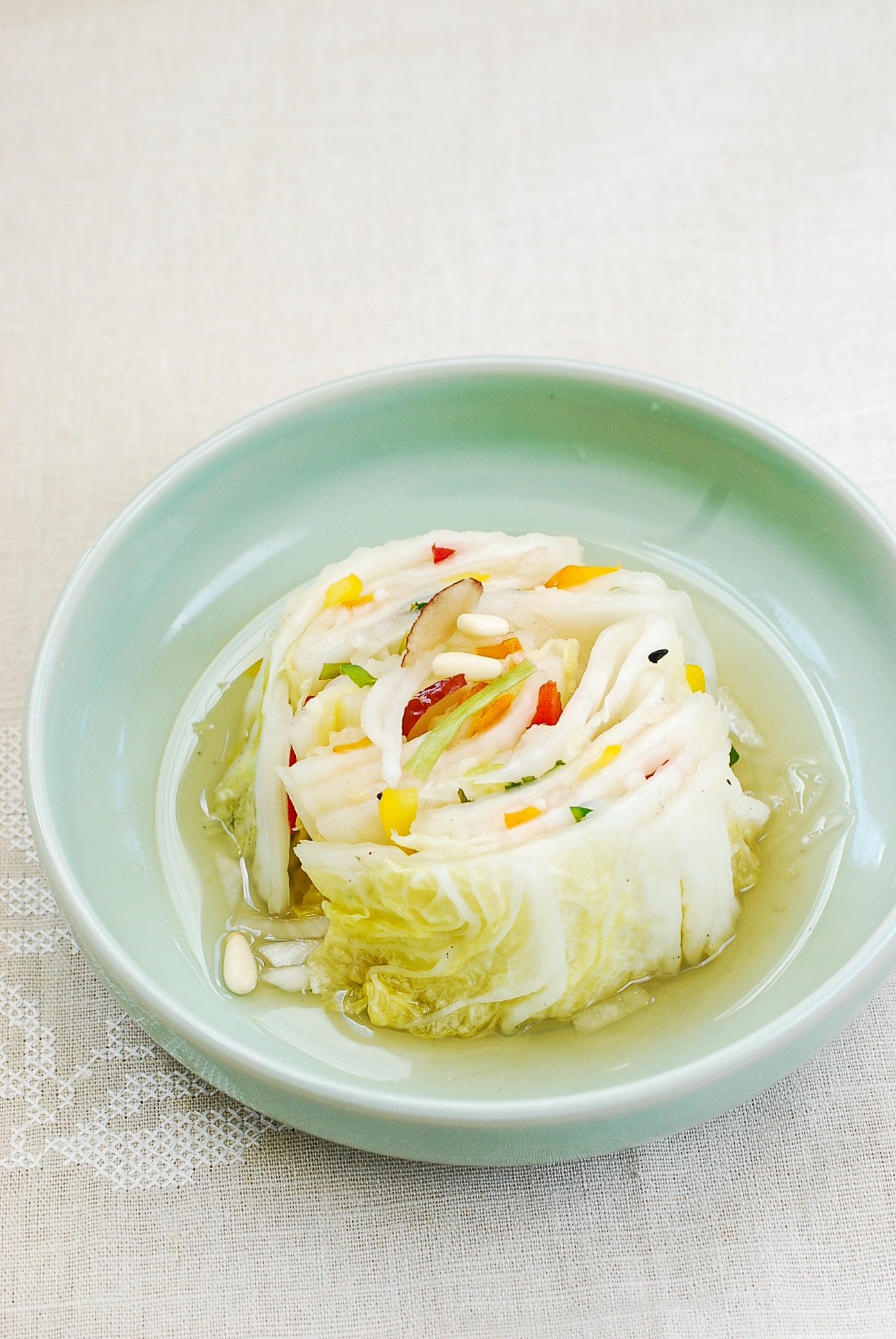Baek kimchi
baek-kimchi, white kimchi, 백김치
Baek-kimchi or white kimchi is a variety of kimchi made without the chili pepper powder commonly used for fermenting kimchi in Korean cuisine. Baek kimchi has a mild and clean flavor, which appeals to children and the elderly, to whom the regular kimchi might be too spicy. Baek kimchi consists of salted napa cabbage, radish, minari, spring onions, Korean pear, chestnuts, jujube, ginger, garlic, salt, sugar, and a little bit of chili threads as garnish. Baek kimchi's mild flavor and crunchy texture makes it a good appetizer when people order main dishes consisting of beef such as galbi or bulgogi at Korean restaurants. It is also used as a wrap for baek kimchi bossam.
Source: Wikipedia
Recipes

White Kimchi (Baek-kimchi) recipe by Maangchi
Baek-kimchi literally translates as "white kimchi" in English, because it's not made with Korean hot pepper flakes (gochugaru), which makes it whitish. It's not spicy at all, but that doesn't mean it's bland! As you see in the video, it's made with precious...




:max_bytes(150000):strip_icc()/4484466-fb9d158bfd3a4d99adbecef2edef7a47.jpg)
:max_bytes(150000):strip_icc()/5108762-d5953ce679144201a3796ba73c10f9ec.jpg)